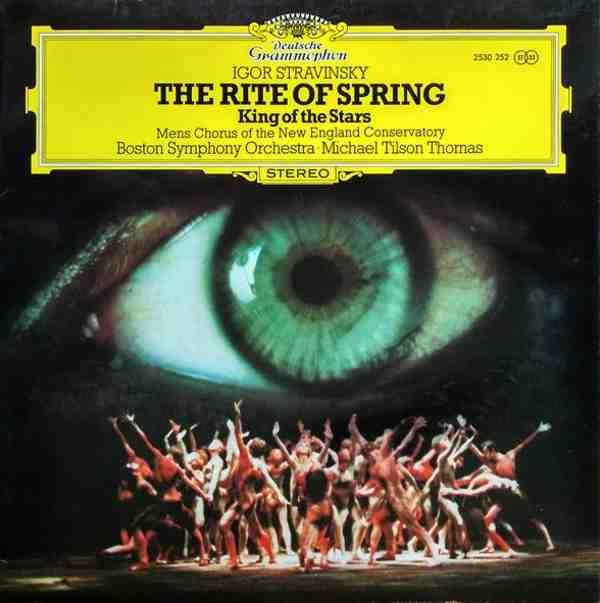Used Vinyl Is the Poor Man's High-Res

High-res audio (HRA) is the new industry buzzphrase. The Consumer Electronics Association is orchestrating a concerted push and a tidal wave of HRA-capable hardware is hitting the market—not only from high-end boutique brands, but from substantial medium-sized companies like Meridian and big ones like Sony. Download services such as HDtracks and Acoustic Sounds are marketing HRA downloads in a variety of formats such as 24-bit FLAC and DSD. I'm privileged to receive a trickle of them for use as demo material in hardware reviews. But my compulsion to collect new music (meaning music I haven't heard) in a high-res format still drives me to forage in the secondhand vinyl market. There I can find classical music at a price I can afford, much of it unissued in digital high-res formats or even on CD.
Yes, my contention is that vinyl is high-res audio. Analog HRA, obviously, not digital. Of course there are qualifiers: It has to be well-recorded material, well mastered, in a clean pressing, in good condition, played back through a good system including a good turntable, good phono cartridge, clean stylus, and good phono stage. Yes, that is a long list. Yes, I still buy CDs (by the truckload). Yes, I'd rather listen to either format under ideal conditions than either one under the worst conditions. Yes, vinyl rolls off at the top and bottom ends and suffers from myriad other distortions and technical flaws. Yes, there are clicks, pops, and surface noises, and that's why I discard some of those cheap LPs after the first play. When I shopped at the Tower Annex, may it rest in peace, I threw out every third item. But at that price, what remained was still a good buy. The store I haunt most often now is more scrupulous; I discard only one item in ten. I'm not going to name the place because I am insanely competitive and refuse to give other collectors a leg up.
How competitive? I was once pawing through used LPs in Greenwich Village, still a vinyl hotbed even today. There was a particular title I'd been hunting for years: The Compleat Dancing Master, a folk-rock masterpiece by Ashley Hutchings and John Kirkpatrick. In those days it was unavailable on CD and there was no such thing as Ebay. I had seen only one copy up to that point and bitterly regretted not buying it. Then I overheard another customer asking for it. The store clerk replied that it might be around somewhere. My competitive instincts kicked in. I had one advantage over my competitor: Having seen the record once before, I knew that the jacket was hunter-green, including the spine. I rapidly scanned the merchandise, checking every green spine, and triumphantly found I was looking for. The minty-fresh sealed cutout cost $2, which is my second-favorite price after $1. I paid for the record and carried it out of the store with the satisfaction that I'd beaten another collector. You can't do that with downloads.
When I needn't pay much, it's easy to be adventurous. Would I like Telemann? It cost only $4 to find out with the third double-LP volume of Tafelmusik by Concerto Amsterdam on Telefunken, with the 1960s-vintage gold-on-black label. I've since located volume one and am working on volume two. (A fellow Ebay obsessive outbid me. Curses!) It cost me just a buck to learn that I like Toshiro Mayuzumi via his Pieces for Prepared Piano and Strings, performed by pianist Benjamin Owen and the Louisville Orchestra with Robert Whitney conducting. Alternate performances of great works are always welcome, so while I own several complete Beethoven symphony cycles, I was glad to add Leonard Bernstein's Vienna Philharmonic recordings on Deutsche Grammophon for $18 (not bad for an eight-LP box). For $1 I took home another DG release, Stravinsky's The Rite of Spring with Michael Tilson Thomas conducting the Boston Symphony Orchestra (pictured). Great hall, great recording, pristine wax, arresting staring-eye cover art, and as a bonus, the LP included a choral work new to my library, King of the Stars.
One day I took the bus home with a $6 DG pressing of Spanish guitarist Narciso Yepes performing Villa-Lobos' Twelve Preludes. I was already an admirer of Villa-Lobos; now I'm also a committed Yepes fan. A week later I picked up Musica Española, with Yepes performing Albeniz, Granados, De Falla, and Turina, for $3. Never a purist, I followed up a CD anthology, Guitarra Española, paying $25 for a five-CD set, or $5 a disc. I'm now identifying Yepes releases not yet in my collection, and lurking, waiting to pay the right price.
Such bargains are still easy to find for buyers of classical vinyl. All of these acquisitions put together cost less than, say, a good U.K. Parlophone pressing of the Beatles' Rubber Soul.
Sometimes acquisitions have a deeper meaning. When my mother was alive, and before the CD era, I occasionally gave her records for her birthday, including Rossini Overtures with Claudio Abbado conducting the London Symphony Orchestra and The Nutcracker with Leopold Stokowski conducting the London Philharmonic. My mother died two years ago, her LPs were gone well before that, and for some reason I can't quite put into words, it became important that I locate copies of these albums. I finally found a sealed copy of the Rossini LP with its jacket full of bright sunflowers. It was worth the $20 I paid on Ebay. The Tchaikovsky cost $3, used but in near-mint condition, from the store whose name must not be spoken.
Audio Editor Mark Fleischmann is the author of Practical Home Theater: A Guide to Video and Audio Systems.








































